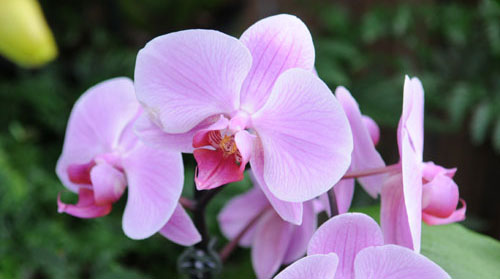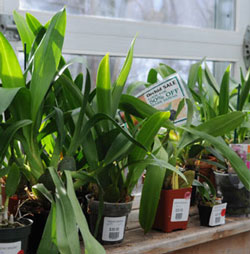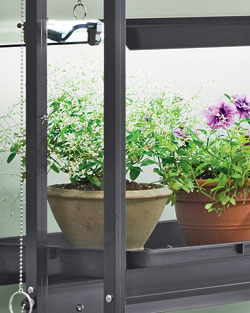






When I started working at Gardener's Supply in the 1990s, my Vermont backyard was pretty green—with grass. Today, there's just a tiny bit of the original lawn left. Most of the available space has given way to trees, shrubs, perennials, annuals and stonework. Watch a slideshow of my garden in Burlington, VT.
In addition to my work at Gardener's Supply, I work in the gardening division at Church Hill Landscapes. In that role, I maintain dozens of gardens and learn a lot in the process. I believe that all gardening is good gardening.

Pay attention to light, water and fertilizer and your phalaenopsis will rebloom.
WHEN it comes to orchids, phalaenopsis (moth orchids) are among the easiest to grow. Blooms last for several months and you can get them to rebloom without a lot of effort. Well, some folks can. I haven't had good luck getting another bloom, and I have the shelf of non-blooming phalaenopsis to prove it. Frankly, I'm a little bit embarrassed.

When they're not in bloom, orchids are often put on sale at garden centers.
In an effort to improve my success, I checked in with our orchid expert at Gardener's Supply, Anita Nadeau. She helps customers in the conservatory at our Williston, VT, store. Here are her tips for getting phalaenopsis to rebloom:
Pay attention to watering and humidity. If you neglect your phalaenopsis, it will not reward you with blooms. The plants are probably growing in a free-draining blend of fir bark, so you need to water regularly. Don't let the roots dry out completely between waterings. Most homes are quite dry during the winter, but you can increase the humidity by setting the orchid pots on a tray of pebbles or a special humidity grid. Make sure the pots are not sitting in the water; they should be just above it.
Fertilize regularly. A fertilizing routine is just as important as a watering routine. Anita recommends feeding orchids with water-soluble fertilizer that's formulated for orchids. Mix at the rate recommended on the package.

If you don't have a sunny window, you can ensure proper lighting with a grow light.
Make sure plants get enough light—but not too much. Anita says, "When a healthy orchid does not flower, it is usually due to not enough light." Phalaenopsis thrive in bright light, but not direct sun. This means east- or west-facing windows are best. If you can't provide adequate natural light, orchids will also thrive under full-spectrum lights.
Provide cool nights. Most orchids thrive best when there is a marked drop in temperature at night, usually about 10 to 15 degrees F. Phalaenopsis are more forgiving in this respect, but a reluctant plant can usually be coaxed into bloom more easily if it's grown where nights are cool.
When we wrote about orchids in our blog, Gardener's Journal, we got several good tips from readers:
Copyright © www.100flowers.win Botanic Garden All Rights Reserved